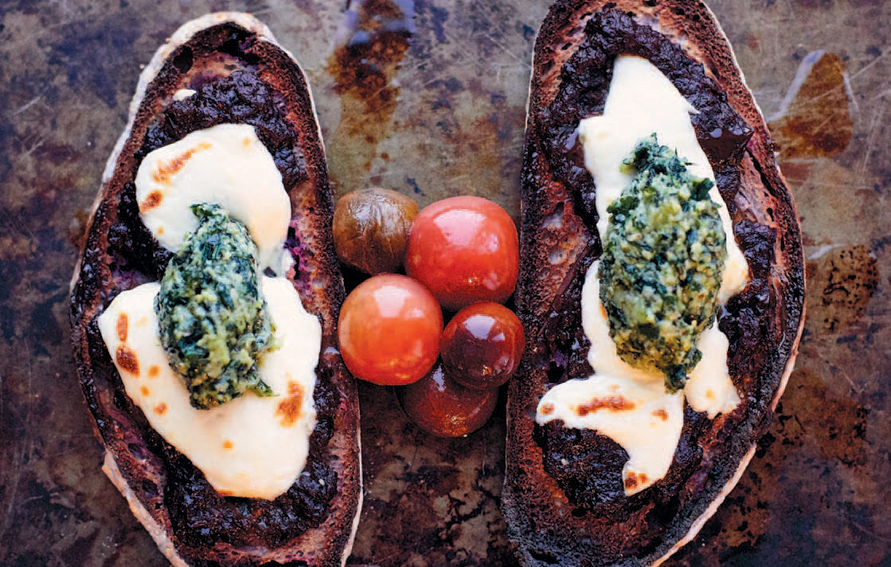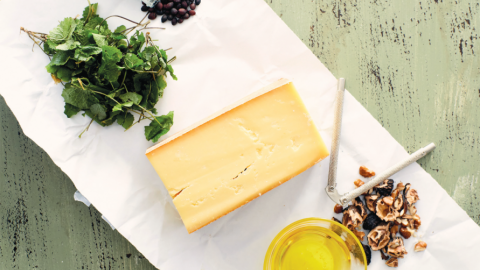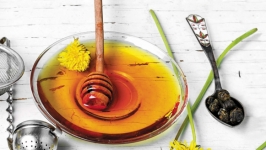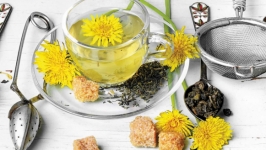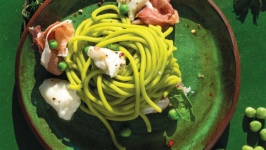Ingredients
- 2 cups wild garlic mustard greens, remove the stems for smoother texture
- ¼ cup black walnuts
- 8 wild garlic bulbs
- ½ cup grated Jacobs and Brichford Everton Premium Reserve
- ½ cup Healthy Hoosier Sunflower Oil
- 5–10 ground spicebush berries
Instructions
Start by crushing the spicebush berries using a mortar and pestle. Set some aside for garnish, or to be added for final seasoning, if desired.
Add the wild garlic bulbs to the mortar with a little salt to help crush into a paste. Wild garlic can be a bit fibrous compared to conventional garlic, so added elbow grease might be needed, or you can easily pick out any larger pieces that resist.
Next add the black walnuts and continue crushing the contents of the mortar into a paste. From here I like to alternate between the cheese and oil, adding a little oil and a little cheese until it is the desired consistency. Salt to taste, add additional spicebush if desired.
It’s important to remember that you are the one who should decide how much or how little you use of each ingredient—I give this recipe only as a guideline. If you don’t have or like some of these foraged ingredients, by all means you should replace any of them with traditional ones. If at all possible, however, I recommend that you get out and enjoy a nice hike in the wild and see what you can find. Also, plan ahead and take the time to buy some Jacobs and Brichford cheeses and Healthy Hoosier oils. Easily found online, they are premium and delicious products that I highly recommend for this recipe.
Wild garlic mustard greens are wonderful in this pesto recipe, but they’re also delicious used raw in fresh salads, added to sandwiches and wraps of all kinds, or as a substitute for collards and other stewed greens. One of the first plants to emerge in spring, garlic mustard is also one of my favorites that continues to deliver healthy and sustainable nutrition until winter. Since it is an incredibly nutritious and delicious invasive species, you will be helping the biodiversity of our forests by learning to recognize it and remove it by the delicious roots—which I like to use for local horseradish.

